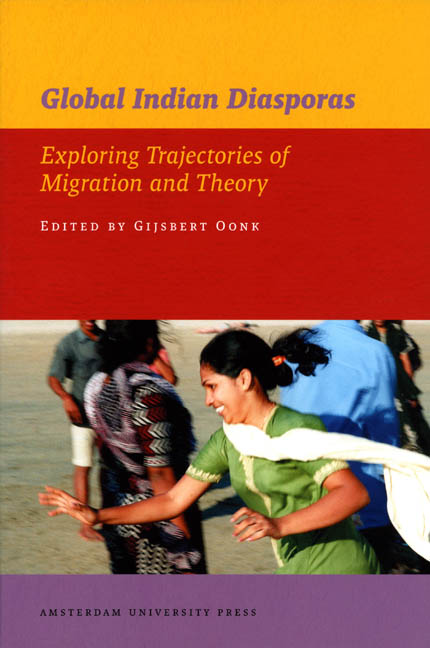4 - Contextualising Diasporic Identity: Implications of Time and Space on Telugu Immigrants
Published online by Cambridge University Press: 23 January 2021
Summary
Introduction
Any diasporic community is uniquely situated owing to its multi-polarity, defined by the continuity/discontinuity of the cultural baggage from the place of origin, the dynamics of the host society and the influence of the motherland or ancestral land. This uniqueness is carried further by temporal and spatial dimensions besides the location of the emigrants in the society of their origin. Some sections of a society are more prone to emigration than others and the causes and consequence of such emigration have their implication for the diaspora formed. For instance, the Indian diaspora is not a homogeneous entity without diversity, though there is an overriding common identity as ‘Indians’ despite the ‘differences’ on account of regions from which they have migrated, when they migrated, where they have migrated to, including the socio-cultural and demographic environment in the receiving society. More often than not, these differences become significant at some stage or the other in the process of settlement and identity formation. A close look at the formation of Indian diasporas, since the mass emigration of indentured labour during the early nineteenth century to the emigration of highly skilled software engineers during the last decade of the twentieth century reveals that there is greater fractured Indian diasporic identity (Verma, and Sheshan: 2003) than has been thus far imagined.
Indian society is distinctively known for its diversity and the Indian immigrants worldwide are no exception to such practices of differentiation on the basis of religion, region, language, and caste. Such differentiation is of course less pronounced in the case of fourth- or fifth-generation descendants of Indian indentured labour employed in European sugar cane plantations of the Caribbean, Africa, South Pacific and Southeast Asia. Long ship journeys that the indenture labour had to undertake to arrive in plantation colonies gave rise to bonds of brotherhood, commonly called ‘jahaji bhai’. Despite the continuities in religious and regional identities, they exhibit a certain homogeneity that is conspicuously absent from among the later emigrants especially after India's Independence.
Towards a Concept of an Old and New Diaspora
Indian diaspora today comprises broadly of four streams following the diverse situations under which they emigrated.
- Type
- Chapter
- Information
- Global Indian DiasporasExploring Trajectories of Migration and Theory, pp. 89 - 118Publisher: Amsterdam University PressPrint publication year: 2007
- 5
- Cited by



